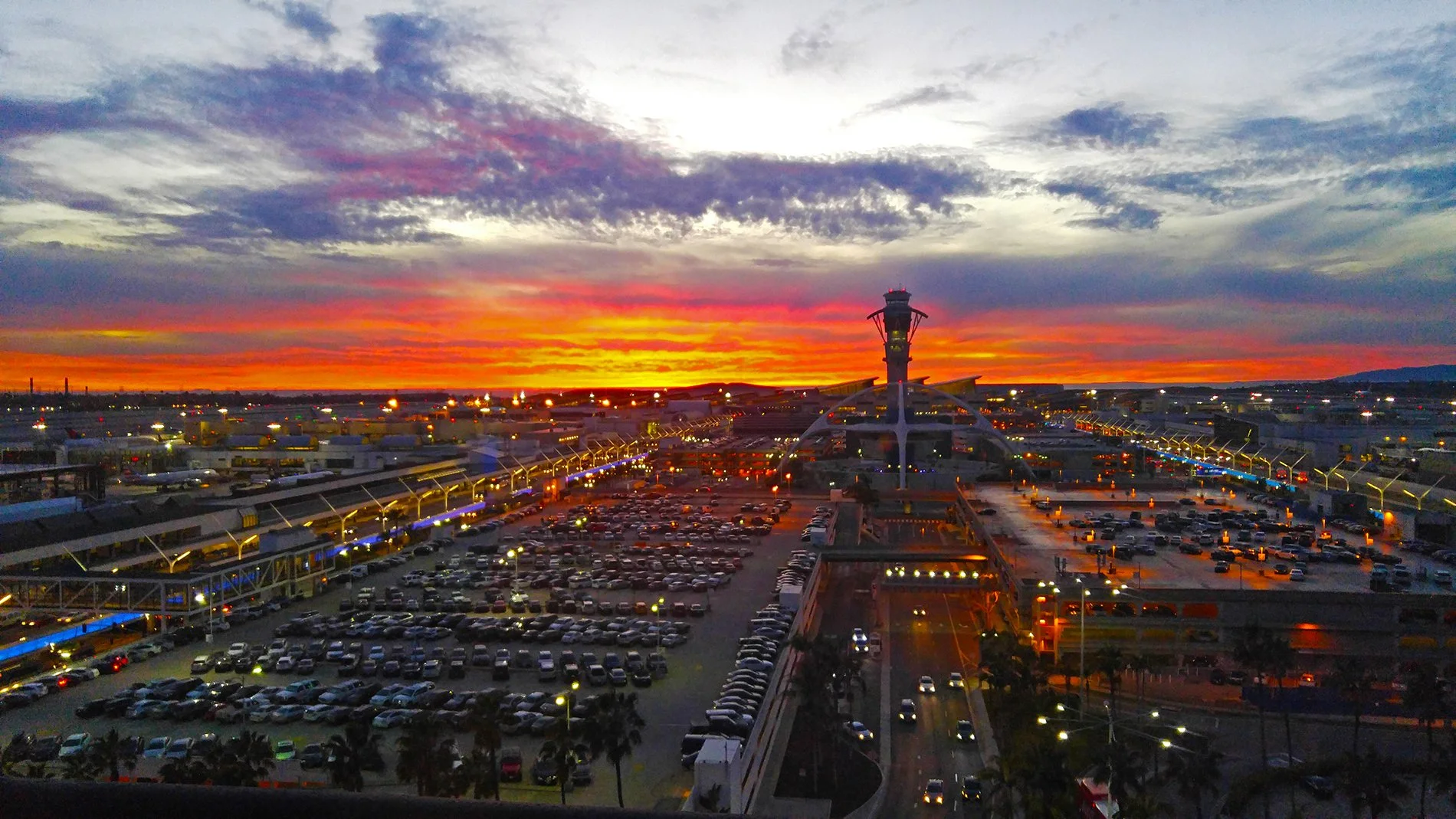
Los Angeles World Airports
Airport Traffic and Terminal Operations
LAX Airport Operations & Traffic Intelligence Platform
As part of the LAX Airport Operations Optimization Initiative, our design team developed a data-driven dashboard to enhance traffic management and terminal operations within and around Los Angeles International Airport. The system integrated real-time and historical data from multiple sources to monitor and predict ground traffic up to a 5-mile radius from the airport.
Key focus areas included:
Traffic Flow Analytics: Capturing vehicle counts, travel speeds, bottlenecks, and incident reports across segmented routes leading to LAX.
Predictive Modeling: Utilizing historical and live data to forecast incoming traffic patterns, supporting proactive route and signal management.
Operational Readiness: When the system predicted an increase in incoming traffic volume, traffic control teams were able to plan ahead, deploy resources more efficiently, and proactively recommend alternative routes, resulting in smoother traffic flow and reduced congestion.
Terminal Operations Insight: Monitoring airline activity, gate assignments, flight delays, and ground movements to optimize passenger drop-off and pick-up efficiency.
Through this integrated approach, the platform enabled a 25–30% improvement in travel time predictability, 15% reduction in congestion-related delays, and a notable decrease in ground incidents. The resulting visibility empowered airport operations teams to make faster, data-informed decisions, improving both passenger flow and overall airport efficiency.
25-30%
Improvement in travel time predictability
15%
Reduction in congestion-related delays
Notable Decrease
In ground incidents through alternative route planning
Design Role and Responsibilities
As the Design Lead, I was responsible for shaping the end-to-end experience and ensuring the platform delivered clarity, usability, and operational value for multiple airport stakeholders, including operations control, traffic management, and airline coordination teams.
Key responsibilities included:
User Research & Discovery: Conducted interviews and workshops with airport traffic controllers, operations managers, and data analysts to understand decision workflows, information gaps, and situational awareness needs.
Information Architecture & Data Visualization: Designed interactive dashboards that surfaced live traffic data, predictive analytics, and key performance indicators in an intuitive, map-based interface.
Cross-Functional Collaboration: Partnered closely with data scientists, engineers, and city transportation planners to translate complex datasets—such as vehicle counts, travel speeds, and incident reports—into actionable insights and predictive visualizations.
Scenario Planning & UX Prototyping: Created prototypes simulating different traffic scenarios (e.g., surge events, peak-hour congestion) to test how operations teams could plan and execute responsive actions.
Design System Integration: Established a scalable design framework and data visualization standards to ensure consistency and clarity across dashboards and terminals.
This design effort ensured that predictive insights were not only technically accurate but also easily interpretable, enabling teams to act faster, reduce congestion, and improve passenger movement efficiency across LAX’s complex ecosystem.
The dashboard provides an operational snapshot of airport congestion across terminals, helping LAWA’s Congestion and Flow Management teams optimize vehicle and passenger flow by visualizing travel times, traffic speeds, and incidents. It combines historical, live, and predicted data to support decision-making.
The goal of this visualization is to show how traffic speed and travel time fluctuate throughout the day for a selected terminal (in this case, Terminal 1 – Departures), and how those metrics compare to historical averages.
By displaying today’s live data side-by-side with historical patterns, airport operations can quickly detect deviations that may indicate unusual congestion, incidents, or schedule misalignment.
CTA View — “Terminal Traffic / Alerts Map”
This zoomed-in view focuses specifically on the Central Terminal Area (CTA) inside LAX, where passenger drop-offs, pickups, and shuttle movements occur. It gives operations staff a street-level visualization of congestion around specific terminals. Operators will also be able to switch between departures and arrivals routes.
Regional View — “Area Traffic / Alerts Map”
This map provides a broader regional overview of traffic leading into the airport from surrounding neighborhoods and highways (e.g., I-405, Century Blvd, and Sepulveda Blvd). It helps the airport operations and traffic control teams understand external congestion sources that affect airport access and plan responses before traffic builds up inside the terminal loop.
Flight Lifecycle Management (FLM) Dashboard
These two screenshots show the Flight Lifecycle Management (FLM) dashboard — a core component of the Los Angeles World Airports (LAWA) operational platform. This dashboard provides real-time visibility into flight operations across all terminals, helping operations staff, controllers, and terminal managers track flight status, anticipate disruptions, and coordinate ground resources efficiently.




